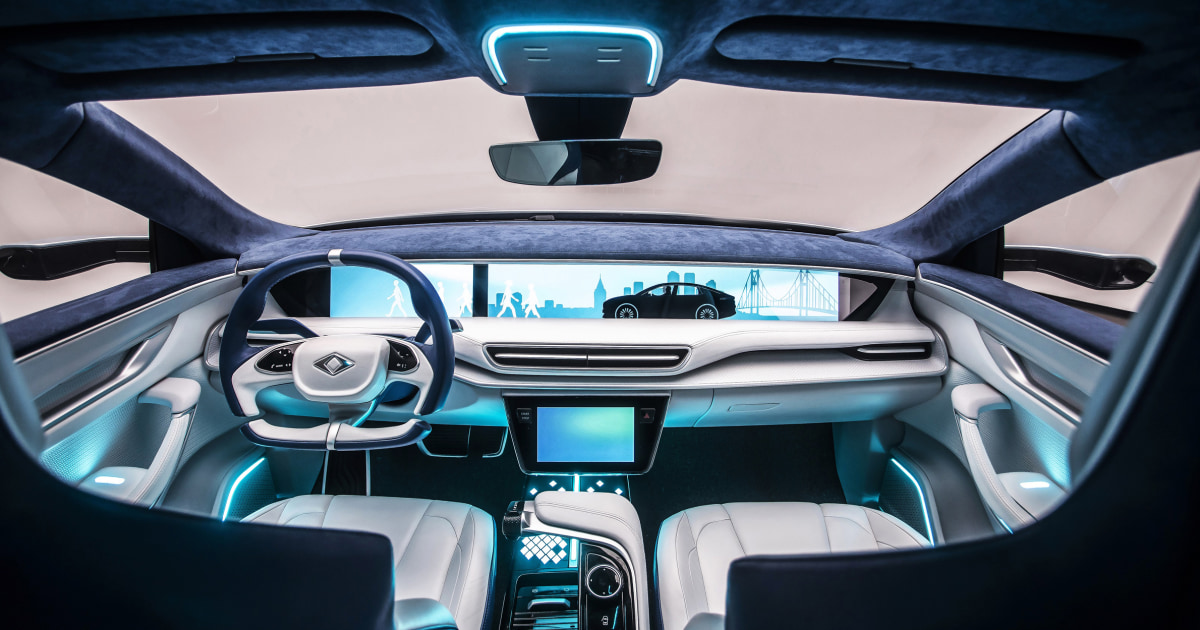
The annual CES electronics show in Las Vegas has long been a fantasyland of high-def televisions, drones, video games and audio gear but, in recent years, it’s also become the place to check out the latest in high-tech automotive.
All told, more than a dozen new production and concept cars made their debut at the Las Vegas Convention Center this week, including some from as far away as Turkey and Vietnam. There’s plenty of news about autonomous vehicles, the latest in-car infotainment, and “wearable robots” that could help create “super-human” factory workers.
Here’s a look at some of the most significant CES news from the automotive front:
Electrification
That’s the big word at CES this year and, with only one exception, every new concept car and production model on display is pure electric.
GM’s Chevrolet Silverado EV is the big draw. Set to go on sale in 2023, it will be the battery-powered alternative to General Motors’ best-selling product line. What may surprise some is that, at 664 horsepower and 780 pound-feet of torque, the electric pickup has substantially more power than the top-line V-8 Silverado.
Range is considered one of the biggest challenges to widespread EV adoption, but the Mercedes-Benz EQXX concept suggests next-generation EVs will address range anxiety — and then some. The sleek prototype gets 625 miles per charge and its batteries are 50 percent smaller and 30 percent lighter than those in the recently launched Mercedes-Benz EQS sedan. No production plans have been announced, but officials say the batteries and other technologies will find their way into future Mercedes electric vehicles.
Performance is another place new EVs are delivering: The 532-horsepower BMW iX M60 crossover will hit 60 in 3.6 seconds and the Silverado needs just 4.5 seconds.
Starting from scratch
Battery cars could help some brands redefine themselves — starting with Chrysler. The once-popular marque has all but vanished from view, down from as many as 12 to just two models today. Now one of 14 brands owned by Euro-American automaker Stellantis, it has only a short time to prove why it shouldn’t be abandoned. Based on the initial response to the Airflow concept car, it’s making its case. The name was borrowed from a breakthrough model from 1934 and may reappear as Chrysler’s first EV in 2025. The brand plans to go all-electric in 2028.
CES also brought out several automotive startups from abroad. VinFast, Vietnam’s first auto company, previewed two electric SUVs in November. It rolled three more into the Las Vegas Convention Center, and plans to launch its U.S. dealer network later this year. It not only plans to undercut the competition on price but will offer an unusual battery leasing program, the company said. The other foreign entry was Togg, a Turkish startup showing off a high-tech sedan concept styled by legendary design house Pininfarina.
Sony has long been a presence at CES with products like the Walkman, the Trinitron TV and the PlayStation game console. This year, however, the Japanese giant shone a spotlight on its Vision-S concept car and announced plans to launch Sony Mobility this spring. A version of the all-electric SUV could go into production over the next few years and, not surprisingly, it would feature hands-free driving capabilities and plenty of infotainment tech to keep passengers occupied.
In-car technology
It’s hard to find a new vehicle that doesn’t have at least one video screen. Some models on display at CES have seven — or more. In the Mercedes Vision EQXX and Togg Transition Concept, their displays run pillar-to-pillar across the instrument panel. One version of the BMW iX battery-SUV is designed to let passengers “Netflix and Chill,” the carmaker declared, with a 31-inch, ceiling-mounted panorama display, 5G connectivity, resolution of up to 8k and smart TV functionality.
Along with those requisite screens, tomorrow’s vehicles will have smartphone-style over-the-air update capabilities. CES participants outlined a variety of applications, including the ability to download software that could remotely fix recalls. Future vehicles will let motorists download new features, increase EV range and performance and stream entertainment — all for a fee.
Hands off
While it is coming along more slowly than many had hoped, GM’s Ultra Cruise system will launch next year on the hand-built Cadillac Celestiq supercar, CEO Mary Barra said. While its features will ultimately be upgraded — using over-the-air, or OTA, technology — the plan is that it will enable motorists to drive hands free on “every paved road in the U.S. and Canada.”
GM wasn’t alone in talking autonomous tech. A variety of self-driving prototypes filled the convention center, along with exhibits showing off the latest in Lidar, radar and the other vehicle sensors that could make self-driving vehicles a reality this decade.
Finally, BMW showed off a possible way to keep your car looking fresh. Instead of conventional paint, a version of its iX electric vehicle was done up in E-ink, the same product used in e-readers. It contains microcapsules of dyes and, by applying an electric current, the SUV can turn black, white or any shade of gray. There are no immediate plans to put it into production, the company said.
Source: | This article originally belongs to Nbcnews.com









